It is surprising sometimes how significance can mushroom from quite small projects. My family are lucky enough to own and run a small private nursery and I’m frequently asked to create resources by our staff. One such recent request came from our pre-school room leader who asked if I could make a robot for the children. Now, I am no engineer, so mechanics were out of the question… but junk modelling? – that is another matter, so the germ of an idea was born. Pet food boxes, Pringles cannisters and other likely raw materials were accumulated over a couple of weeks, till I had enough to start building. Armed with my trusty glue gun my robot began to take shape over a weekend.
When I have created resources for the nursery before I prefer there to be a ‘back story’ rather than a new resource simply ‘arriving’, so when we did some work in our ‘secret garden’ one weekend, I took pictures and printed them into a little book showing the adventure ‘Daisy’ had been having and setting the children a bit of a treasure hunt (Daisy was actually a straw scarecrow bought for 50p from the local garden centre ‘end of stock’ bin). I therefore decided the robot had to have come from somewhere and there had to be a rationale for him/her to be here. Thus, alongside the construction, the back story began to take shape.
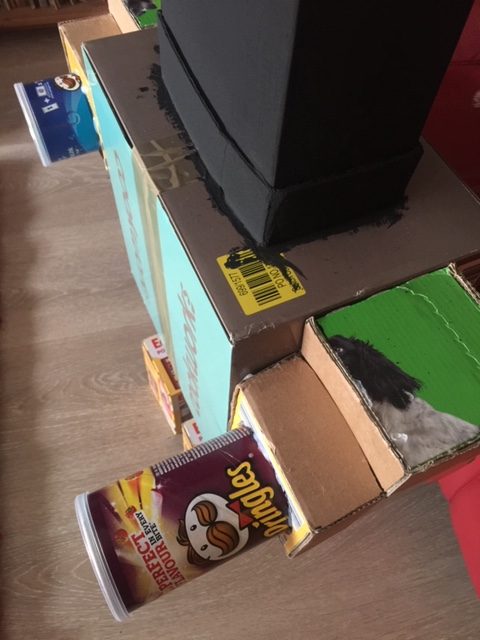
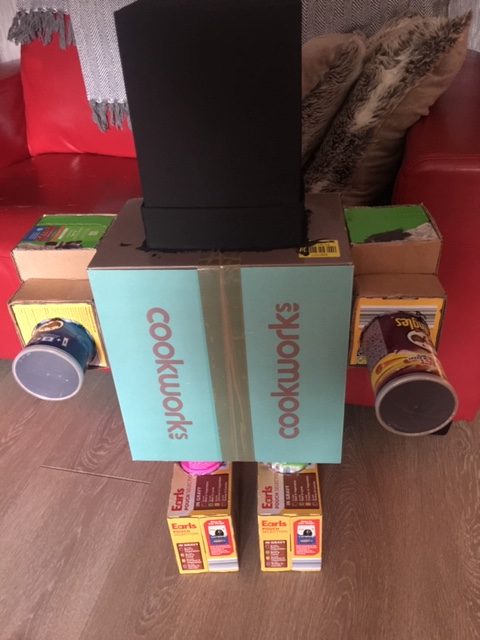
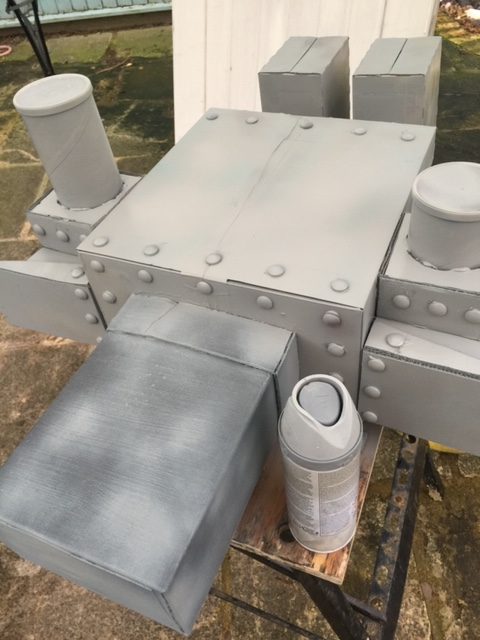

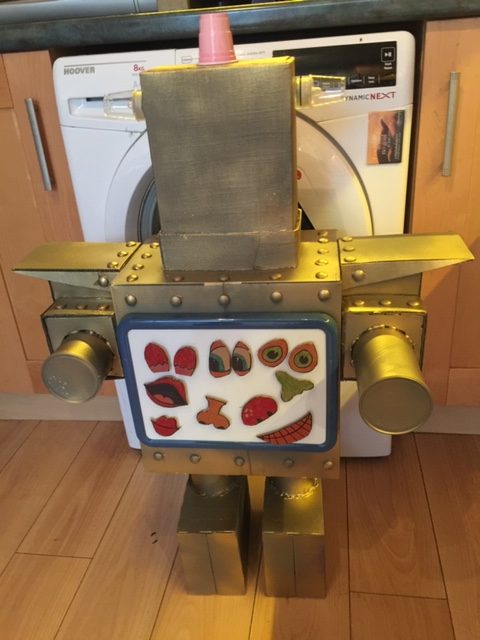


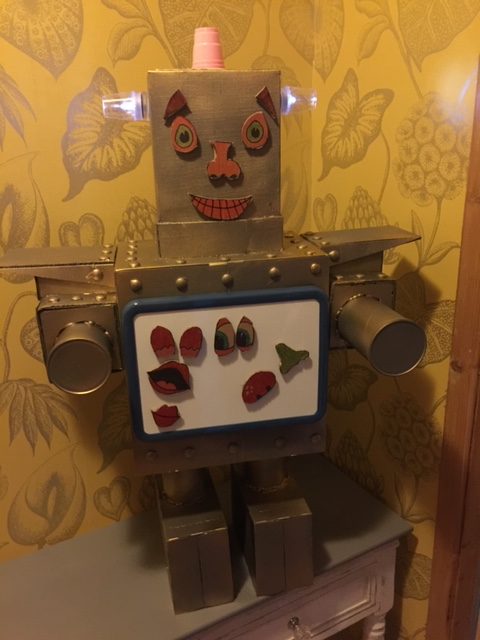
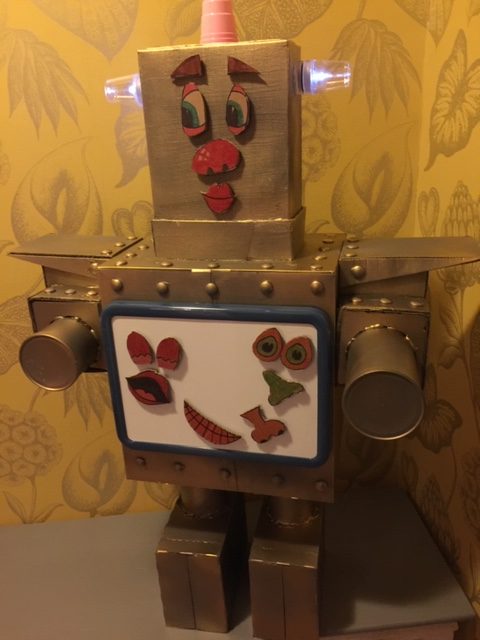
I suppose my childhood diet of sci-fi and outer space during the 50s and 60s fuelled my imagination, so that’s where he came from… a planet where robots worked hard, but no-one ever thanked them for their endeavours. Because of this, robots never learned to experience emotions. I’d found the key for the robot resource!
As the construction developed, I coincidentally discovered that there is such a thing as magnetic paint, and this is where the masterplan came together. I gave the robot a magnetic face and made interchangeable facial features so that his/her expression could be altered. I also wrote the accompanying story to get the children thinking about showing care and gratitude, practicing good manners, thinking and talking about emotions and showing empathy.
An informal follow up evaluation a couple of weeks after the robot arrived showed the following:
- Children loved changing the robot’s face and trying to copy his/her expressions.
- Boys were particularly animated and engaged
- Key workers were able to incorporate number work with the resource
- The children talked about the different shapes making up his/her body
- They walked like robots at music time and talked in ways they thought robots might talk
- Children were heard encouraging each other to say please and thank you and generally be aware of their manners
- It captured their imagination and follow-on activities included using tin foil to make and decorate their own robots.
- With the teacher they built their own giant model of a robot they could climb inside
I have now had a request to develop a sequel linking into the theme of recycling – this may just become the reason s/he stays on Earth rather than returning to his/her own planet.

